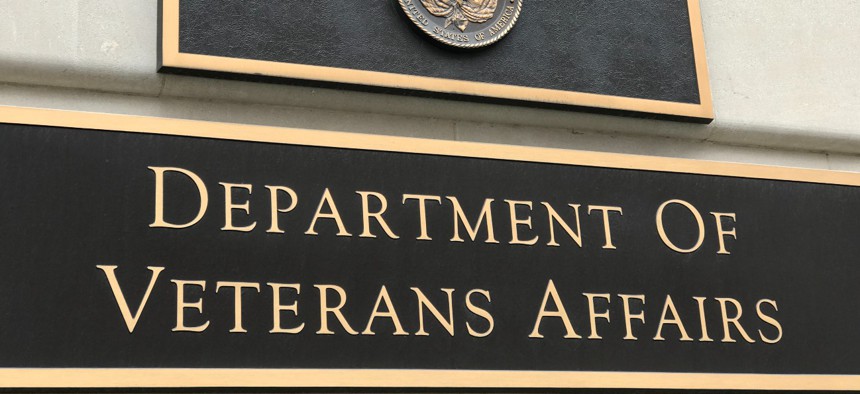
The Veterans Affairs Department is a good place to start with agency-specific reform efforts, observers say. Kiyoshi Tanno / iStock
The Veterans Benefits Administration is a Good Candidate for Tailored Reforms
Additional hiring flexibilities and compensation changes would allow the agency to respond faster to new legal requirements.
A recent piece for Government Executive titled “Government Reform Isn’t Dead. It’s Just Changed” recommends that federal agencies no longer wait for large-scale reform and instead focus on smaller, tailored changes to fit the needs of their agency. An excellent candidate for agency-specific reform is the Veterans Benefits Administration, which faces challenges with customer service and could serve as an example for other agencies that fit into the broader category of “production agencies.”
Production agencies are characterized by three needs: delivering their required output, getting their metrics right for measuring success, and focusing on customers. In many respects, they resemble the factory floor in a manufacturing company, and they face a common challenge: They rely on their people to process applications for benefits in a timely fashion and respond to customer needs. Currently, hiring is simply too slow and ineffectual to meet customer demands. In the years ahead, these agencies will need to more nimble.
When he was undersecretary for benefits at the Veterans Affairs Department, Paul Lawrence, co-author of this column, saw production agency challenges first-hand. He was responsible for implementing new regulations to comply with a 2019 law regarding Blue Water Navy veterans, considered to be those who served aboard ships in the open waters off the coast of Vietnam during the Vietnam War, and who did not go ashore. The law extended the presumption of herbicide exposure and made them eligible for benefits. The Veterans Benefits Administration was given six months to get the program up and running and to be able to accept applications on January 1, 2020, but because of the length of the hiring process, VBA was behind the required timeline from the start. The agency had no special authorities to bypass existing rules to get the program off the ground.
With special authorities, the hiring process could have been completed in no more than 30 days, instead of six (or more) months. While some of these hires might have been permanent staff, others might have been term appointments in response to meeting specific immediate challenges facing the agency. Flexibility to hire would also likely have decreased the agency’s reliance on contractors. Such flexibility to hire would mean increased ability to attract specialized staff to better manage key processes such as acquisition and technology.
In the private sector, it is now common for companies to place job announcements, receive resumes, interview candidates and hire immediately. In VBA 2.0, with new employees hired faster, there would have been ample time to train new hires on reviewing Blue Water applications and making accurate claim decisions. An increase in accuracy would have saved money in the reduction of rework time and a decrease in appeals of benefits decisions.
There will be more work that requires fast hiring at the Veterans Benefits Administration. In 2022, Congress passed legislation to improve the presumption process for burn pit veterans. VBA again faced new legal requirements and an increased workload with new rules and claims to process. The existing slow hiring process continues to make the job of VBA even more difficult.
In addition to quickly implementing new legislative mandates, VBA faces the continual challenge of updating its technological capabilities. With rapid advances occurring in artificial intelligence, it is likely that AI could be used in the future to make initial determinations on veterans’ claims. But implementing these new capabilities would require highly specialized information technology talent. Such talent is in high demand and in short supply at VBA. The current VBA faces a steep challenge to hire such talent. VBA 2.0 would be better equipped to hire such individuals, with both pay flexibility and hiring flexibility.
Another example where the present system of hiring and compensating employees hinders service to veterans involves financial management. VBA is essentially one of the country’s largest financial institutions, paying out $150 billion in benefits annually. This is a complicated undertaking and it is vulnerable to significant improper payments and fraud. Private sector financial organizations—banks, mutual funds and insurance companies—employ top talent and cutting-edge tools and approaches to thwart bad actors and secure their customers’ funds. VBA can’t do this now, because of the limitations it faces with its existing hiring authorities and compensation system, but VBA 2.0 would be better able to protect taxpayers and veterans with access to the same top talent.
Between now and 2028, we anticipate dramatic changes in the operations of the federal government’s production agencies, including the Veterans Benefits Administration. Rapid advances in technology and artificial intelligence will improve the ability of government to process benefits claims more quickly and accurately—the primary output of production agencies. Can VBA and other production agencies get there with their existing rules, regulations and hiring authorities? We are skeptical.
Production agencies all share many of the same common problems. Working together over the next five years, agency-specific reform is indeed possible and much needed.
Paul R. Lawrence and Mark A. Abramson are co-authors of Succeeding as a Political Executive: 50 Insights from Experience. Lawrence is the former undersecretary for benefits at the Veteran Affairs Department and can be reached at lawrencepaul@cox.net. Abramson is president of Leadership Inc. and his email address is mark.abramson@comcast.net.






